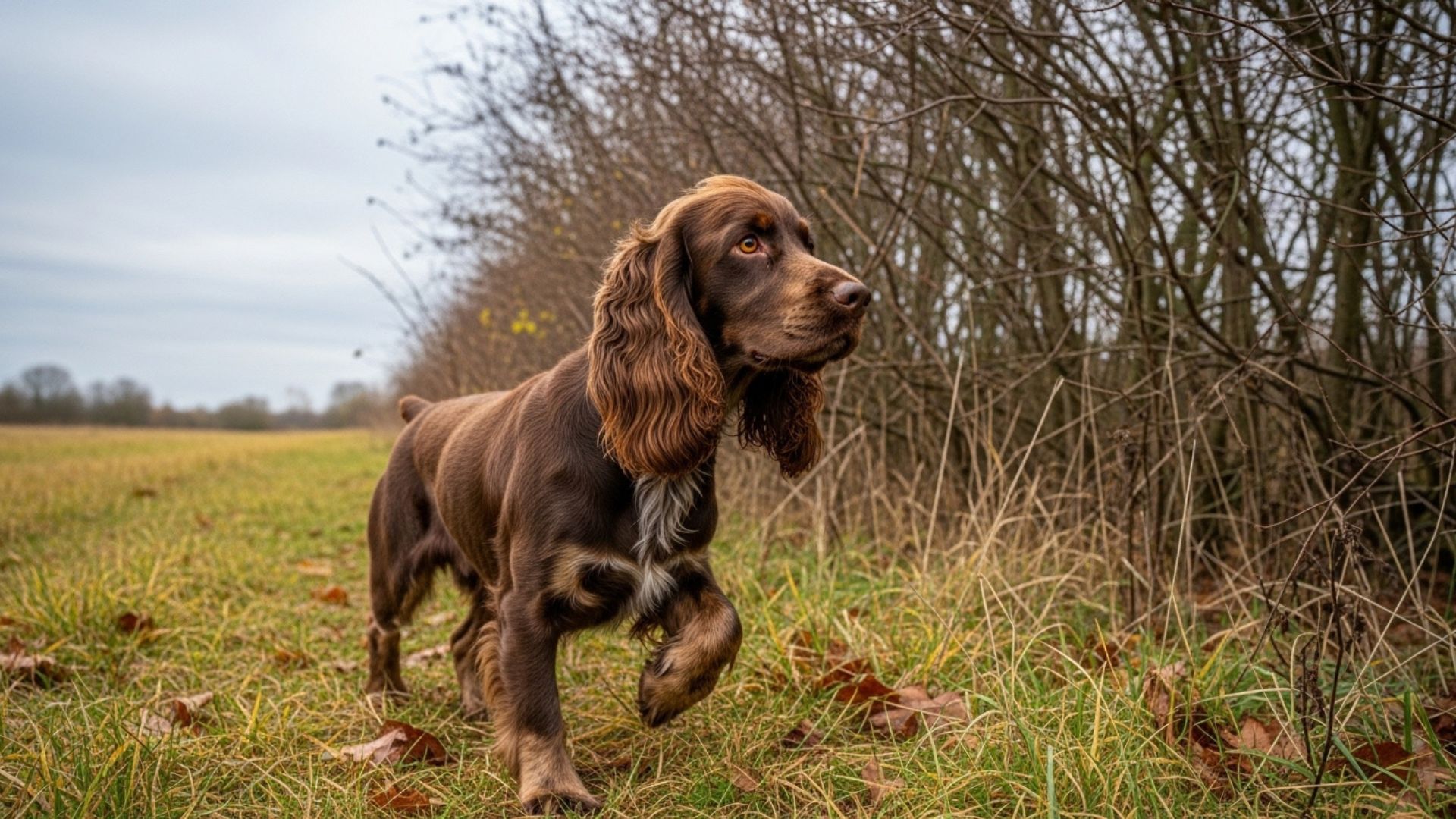Small-game hunting has long relied on agile, sharp-witted dogs whose natural athleticism makes them invaluable partners in the field.
Guided by an extraordinary sense of smell and finely tuned hearing, these dogs excel at tracking, flushing, and retrieving game across a variety of terrains—whether dense forest, open marsh, or rugged mountainside.
Each breed was developed with a unique purpose in mind, allowing hunters to choose companions tailored to their specific quarry.
From keen-nosed hounds trailing rabbits to energetic sporting breeds skilled at pointing out or collecting upland birds, small hunting dogs continue to impress with their drive and versatility. Though compact, these dogs bring outsize determination to every outing.
Their instinctive abilities make them exceptional in the field, yet many also fit seamlessly into family life with their loyal, affectionate natures.
In this guide, you’ll meet seven standout small-game hunting breeds and learn what sets each one apart. We’ll explore the qualities that make them reliable hunting partners and share practical training insights to help you shape a capable, confident companion—both on the hunt and at home.
Best Dog Breeds for Small Game Hunting
1. Boykin Spaniel
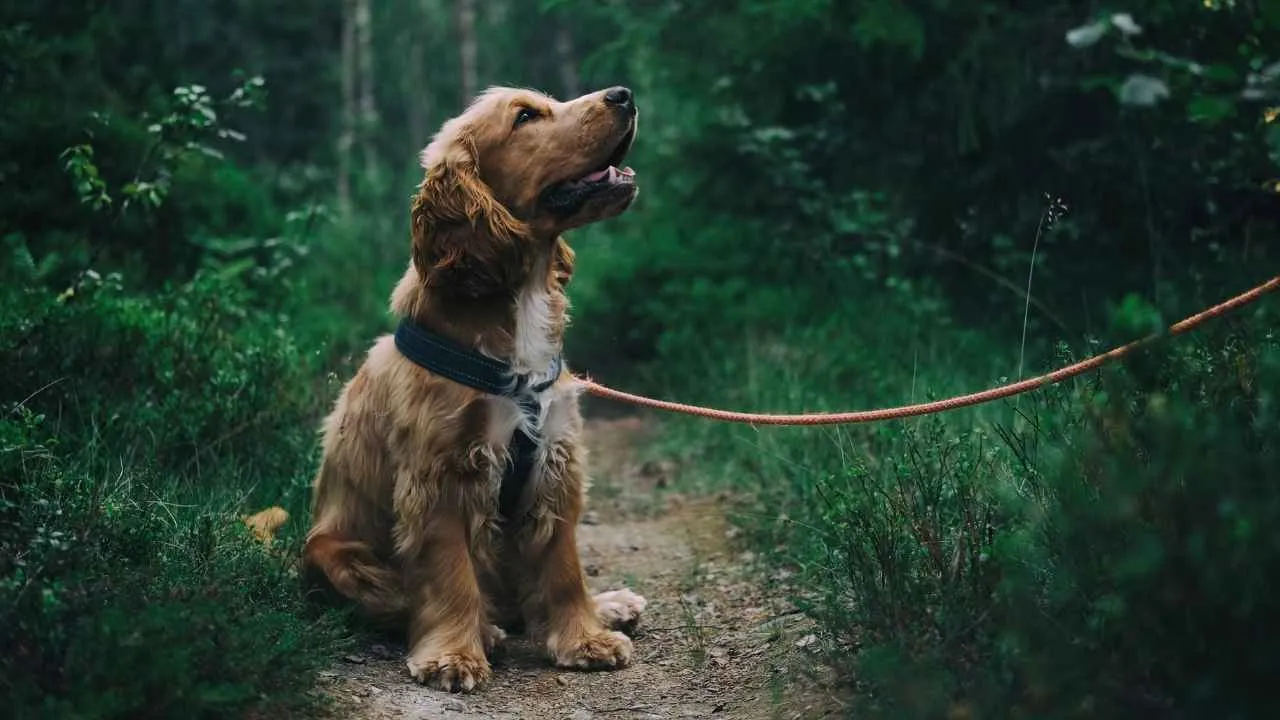
Often called the “Little Brown Dog,” the Boykin Spaniel is a compact American gun dog developed in South Carolina and known for its rich liver-brown coat and eager disposition.
According to the AKC, the Boykin Spaniel is described as a medium-sized flushing and retrieving breed with a distinctive rich brown coat, noted for being enthusiastic, cheerful, eager to work, and highly trainable.
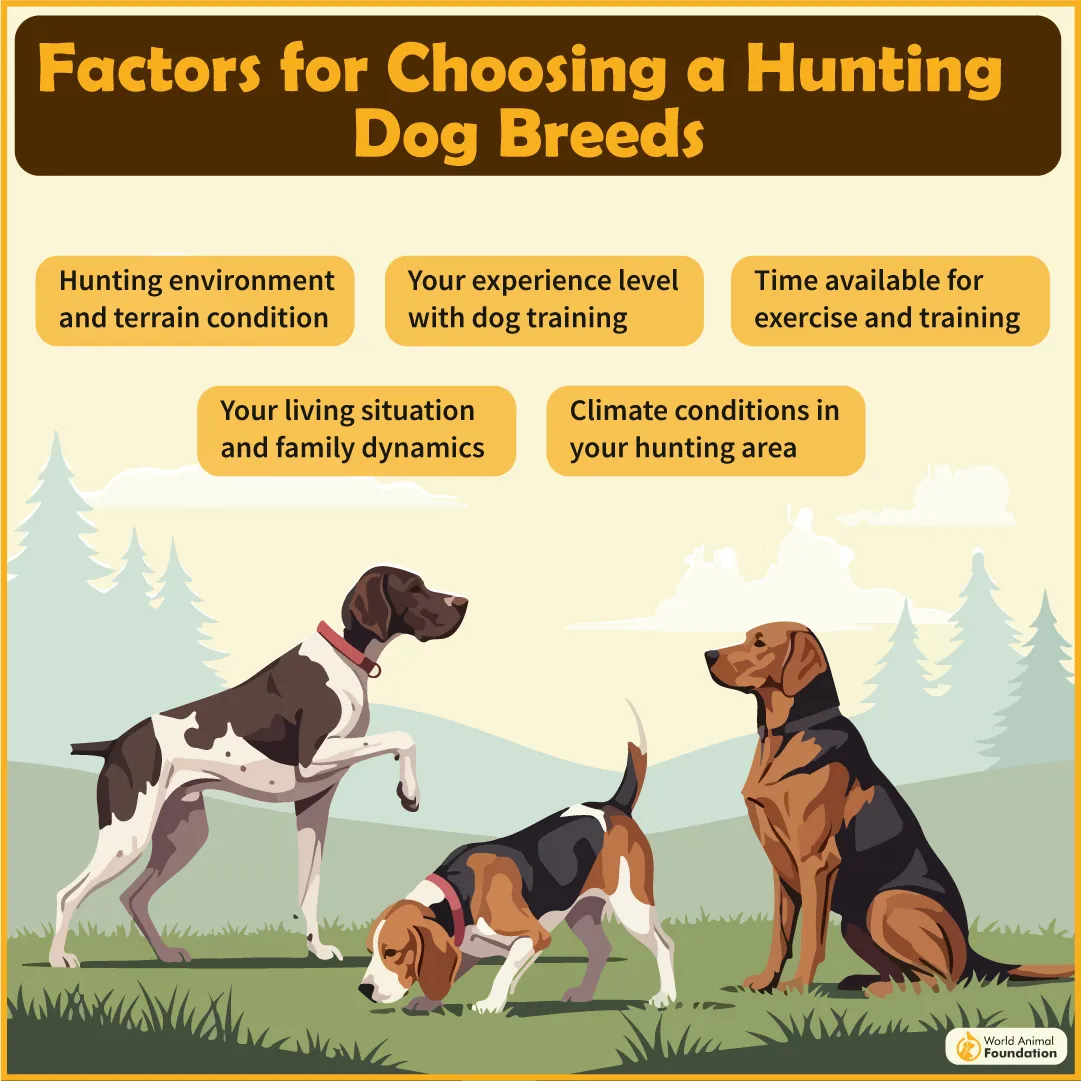
In the field, the Boykin excels at flushing small game, driving birds from dense brush with sharp focus and enthusiasm. Its determination makes it well-suited for upland hunts where quick responses and persistence are essential.
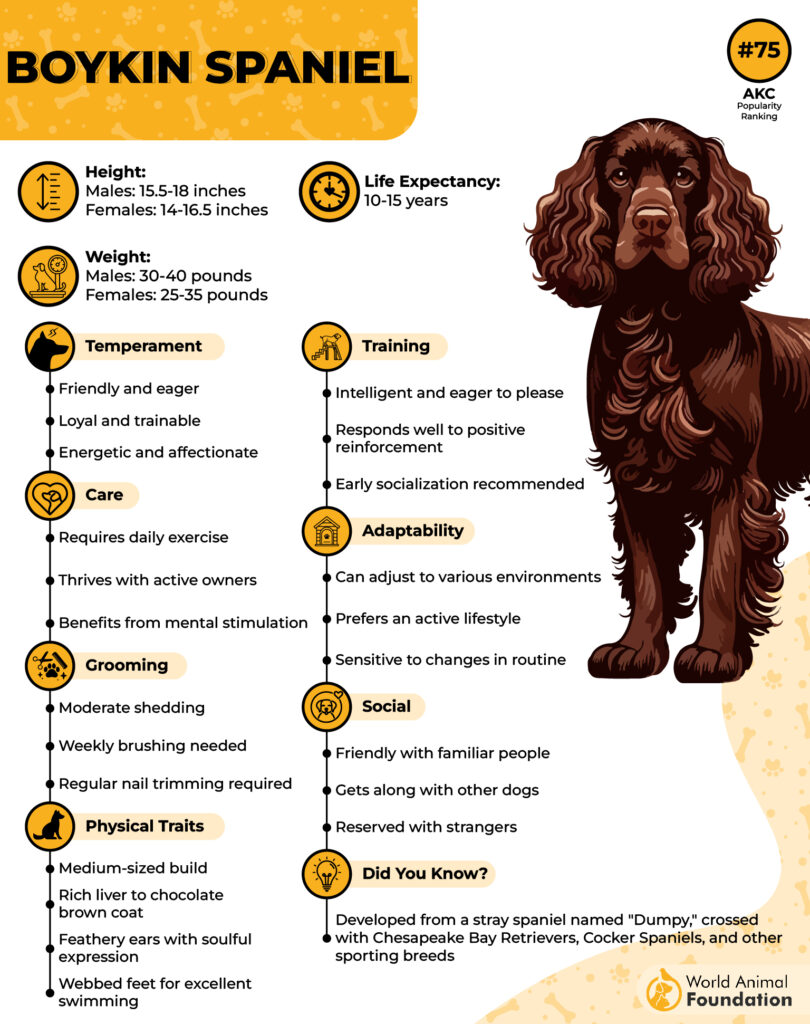
This breed’s natural retrieving ability also shines in water, making it a strong match for hunters who pursue ducks from tight marsh channels or small boats. Its manageable size allows it to ride easily in canoes without disturbing balance.
Boykins handle heat well and maintain impressive stamina during long days in southern wetlands, making them adaptable partners across varied terrain. A notable fact is that the breed was developed from several dogs, including pointers, springer spaniels, and American water spaniels.
2. English Cocker Spaniel

Often referred to as the “Cocker” or “English Cocker,” this compact Spaniel is known for its cheerful temperament, lively energy, and impressive nose. Its manageable size and adaptable nature make it both a reliable sporting companion and an easygoing house pet.
According to PetMD, the English Cocker Spaniel is commonly referred to as “merry” due to its cheerful and endearing temperament.

In the field, the English Cocker Spaniel shines as a dedicated upland bird hunter. Its agility allows it to move effortlessly through dense brush, flushing game from heavy cover with speed and precision.
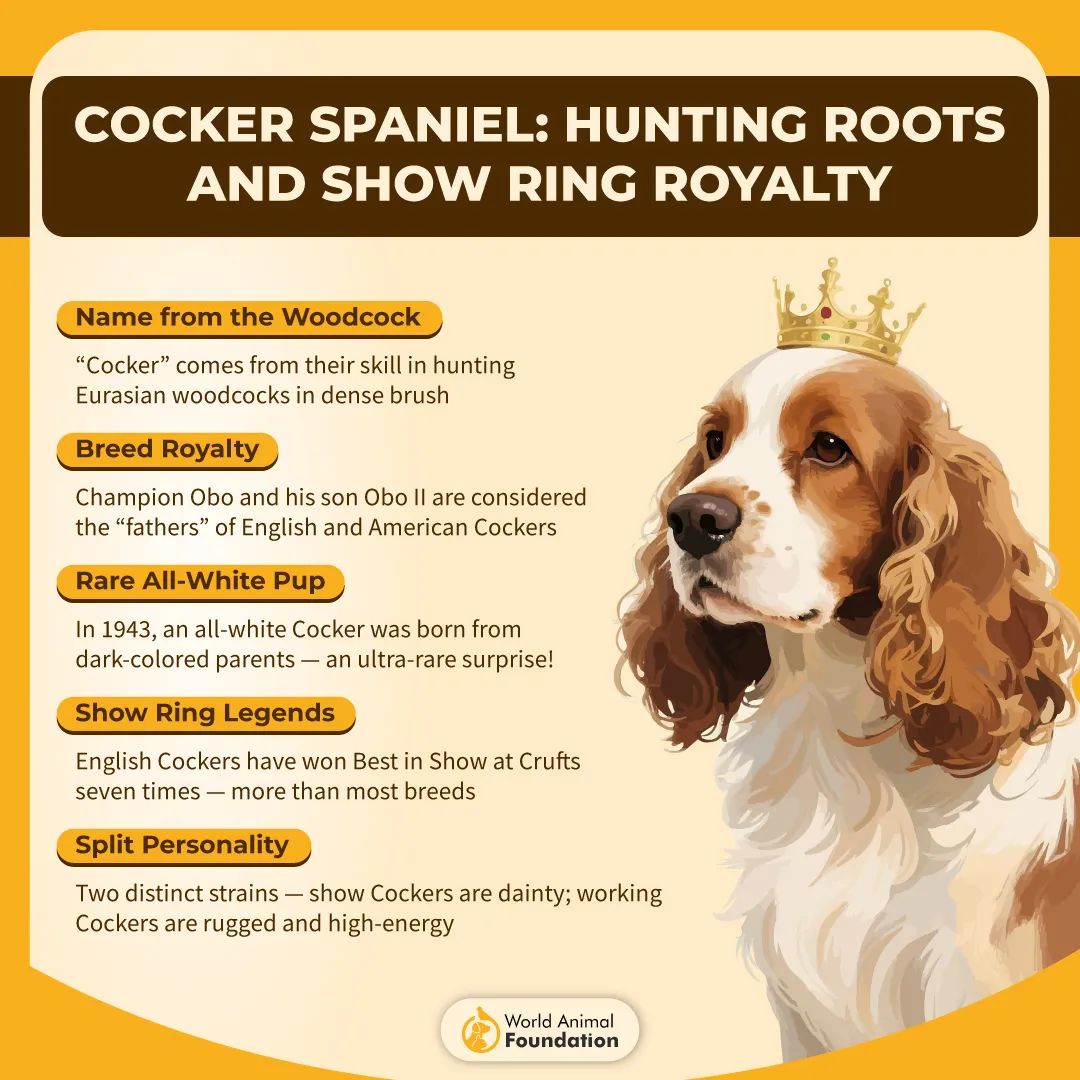
The breed’s endurance is another asset, helping it maintain drive throughout long days in the field. Its natural enthusiasm keeps it focused on tracking birds, while its eagerness to please makes training smoother for new and experienced handlers alike.
Beyond its field talents, the English Cocker’s affectionate personality makes it a seamless fit for family life. Many hunters appreciate how this dog can shift from a tireless worker outdoors to a gentle, cuddly companion indoors.
Fun fact: The English Cocker is especially noted for its exceptional sense of smell and boundless energy.
3. Brittany Spaniel
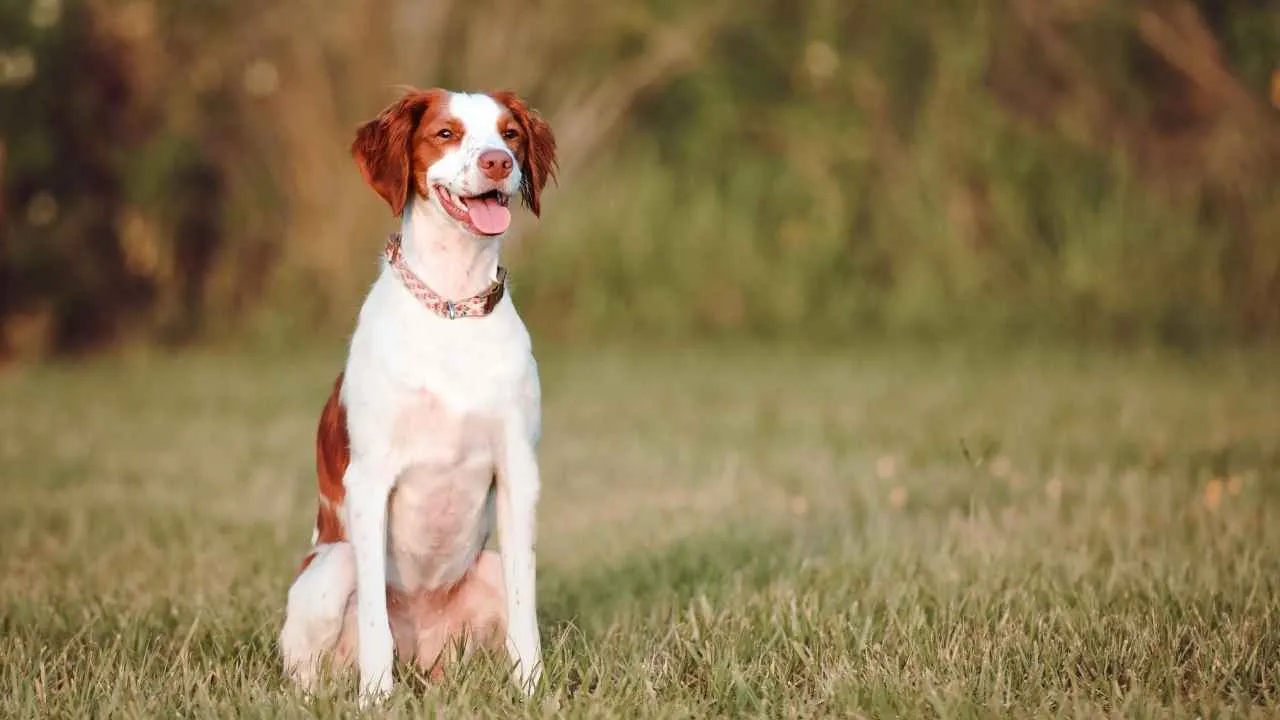
The Brittany is a compact sporting dog that bridges the line between a Spaniel and a Pointer. With a dense, flat-to-wavy coat and an enthusiastic temperament, the breed was originally developed as a versatile gun dog capable of excelling in upland terrain.
According to WebMD, Brittany dogs are described as affectionate and also recognized for being powerful hunting companions.
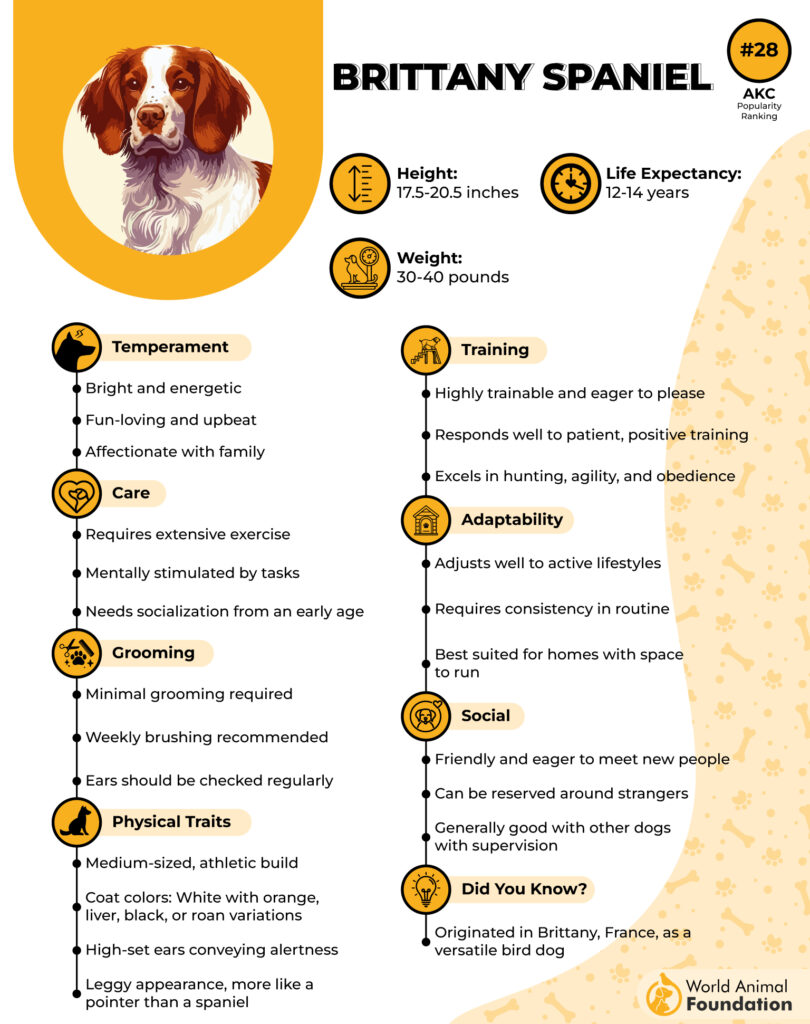
Brittanys stand out in small-game hunting for their sharp noses and quick, athletic movements. Their ability to lock onto scent trails and hold a steady point makes them especially effective when tracking birds that hide deep in brush or cover.
Because they combine stamina with agility, Brittanys can work long days in rolling fields or wooded areas without losing focus. Their natural eagerness to please also helps them adapt to different hunting styles, making them a favorite for hunters who need a dog that can both locate and retrieve.
Beyond their field drive, Brittanys are attentive, affectionate companions that handle training well—though they do need consistent activity to prevent restlessness. Their high energy and bird-finding instincts are why they’re still considered one of the most reliable pointing dogs for upland hunters.
Fun fact: Brittanys hold more dual championships in show and field trials than any other sporting breed.
4. Beagle
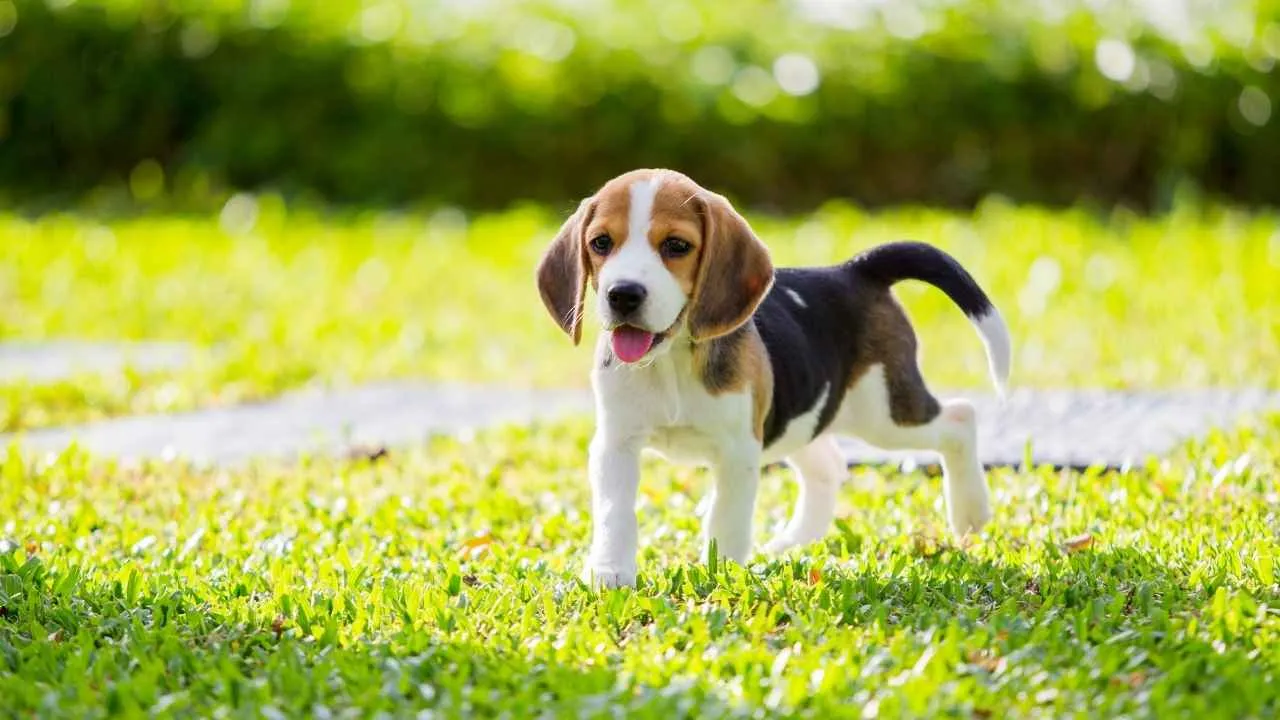
Often referred to as a classic Rabbit Beagle or Glove Beagle in historical texts, the Beagle is a compact scenthound celebrated for its cheerful demeanor and powerful nose.
Its small frame and enthusiastic stride make it an approachable choice for hunters who want a manageable yet highly capable small-game partner.
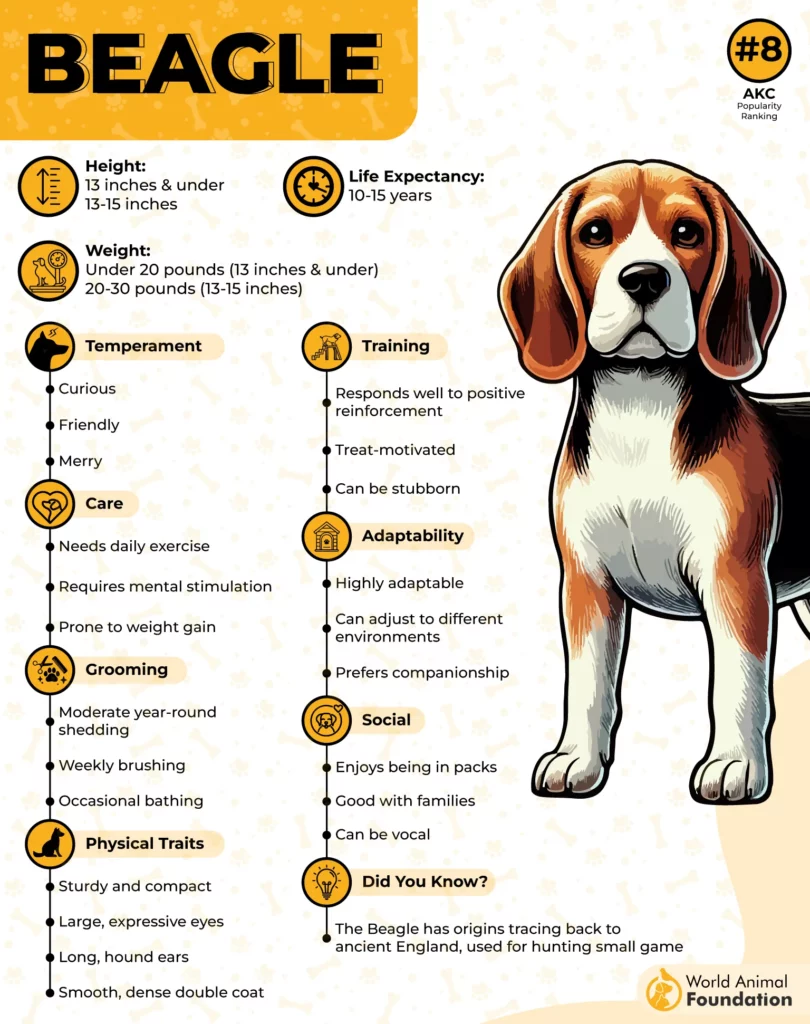
In the field, Beagles shine when flushing and pursuing small game, especially rabbits hidden deep in dense thickets. Their steady pace and persistent tracking style allow them to maneuver through heavy brush where larger dogs struggle to follow the trail.
Beagles excel beautifully in small-game setups by driving quarry out of cover and keeping game moving. Their loud, distinctive bay helps hunters track their movement from afar, making them reliable partners in thick cover.
Thanks to stamina and a nose ranked just behind the Bloodhound, these hounds have remained a staple in small-game hunting for generations.
Fun Fact: Early packs of Beagles ran so closely together that hunters joked they could “cover them with a sheet.”
5. Jack Russell Terrier
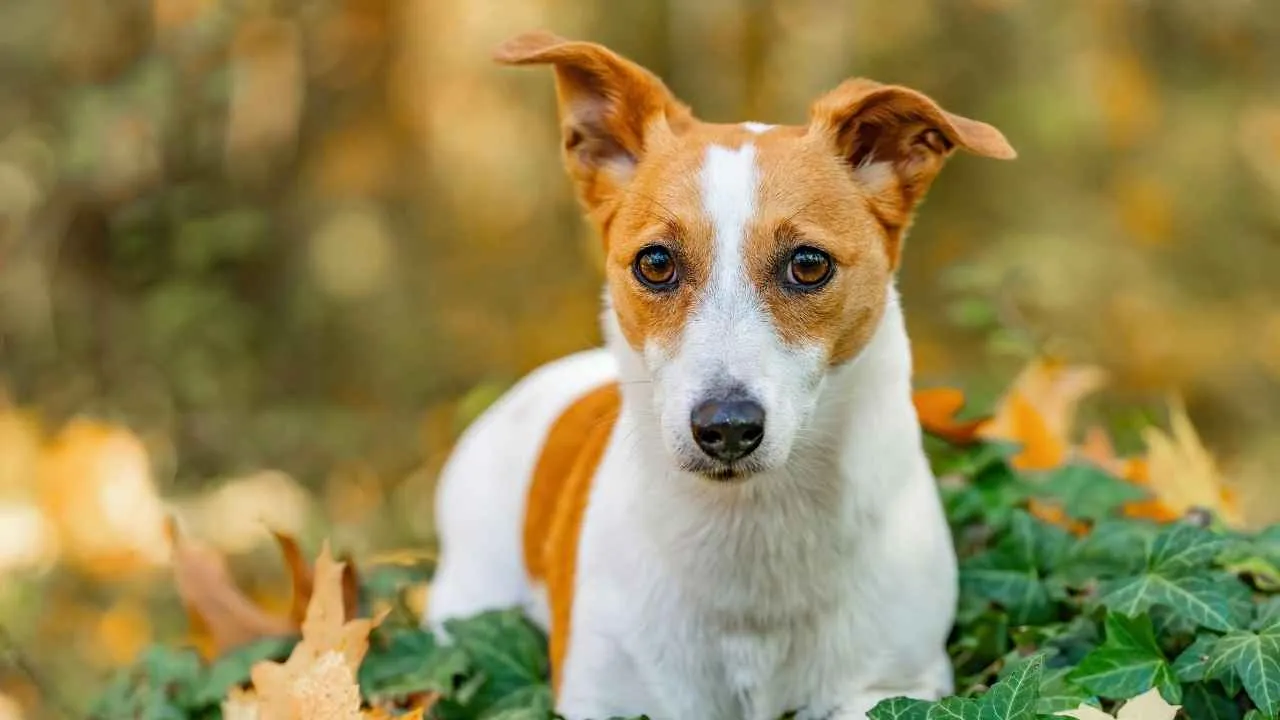
Often called the JRT or Jack Russell, this compact terrier is known for its fiery personality and unmistakable tenacity. Originally bred for fox hunting, it was designed to be fast, fearless, and small enough to dive into dens yet agile enough to keep up with horses on the chase.
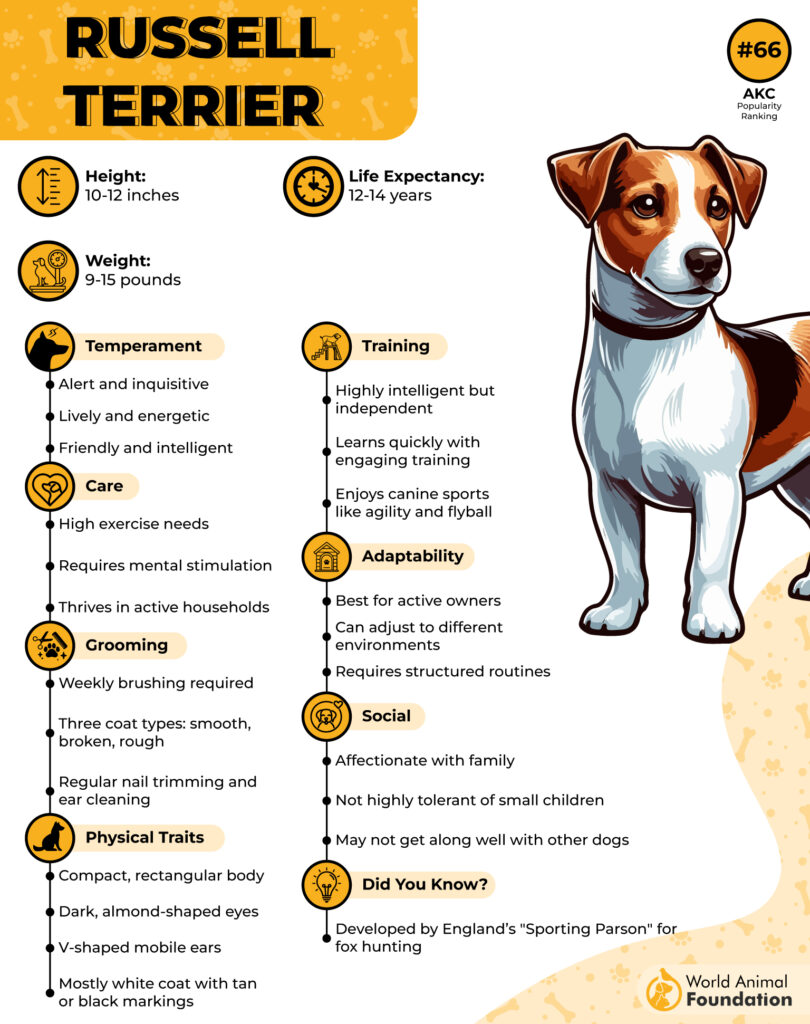
The Jack Russell excels at flushing rabbits, raccoons, and other critters from tight cover. Their bold drive and nonstop energy make them ideal for hunters who need a dog that can work tirelessly and react quickly in the field.
Because of their intelligence and strong prey instinct, JRTs thrive when training includes structured boundaries and early socialization. Keeping sessions fast-paced and rewarding helps channel their natural enthusiasm into reliable work during hunts.
Varied drills—like controlled scent-tracking games and impulse-control exercises—keep them mentally sharp and prevent boredom. They respond best to positive reinforcement and engaging tasks that mimic real hunting scenarios.
Fun Fact: Jack Russell Terriers were once carried in saddlebags so they could be deployed quickly to flush foxes mid-hunt.
6. Black and Tan Coonhound
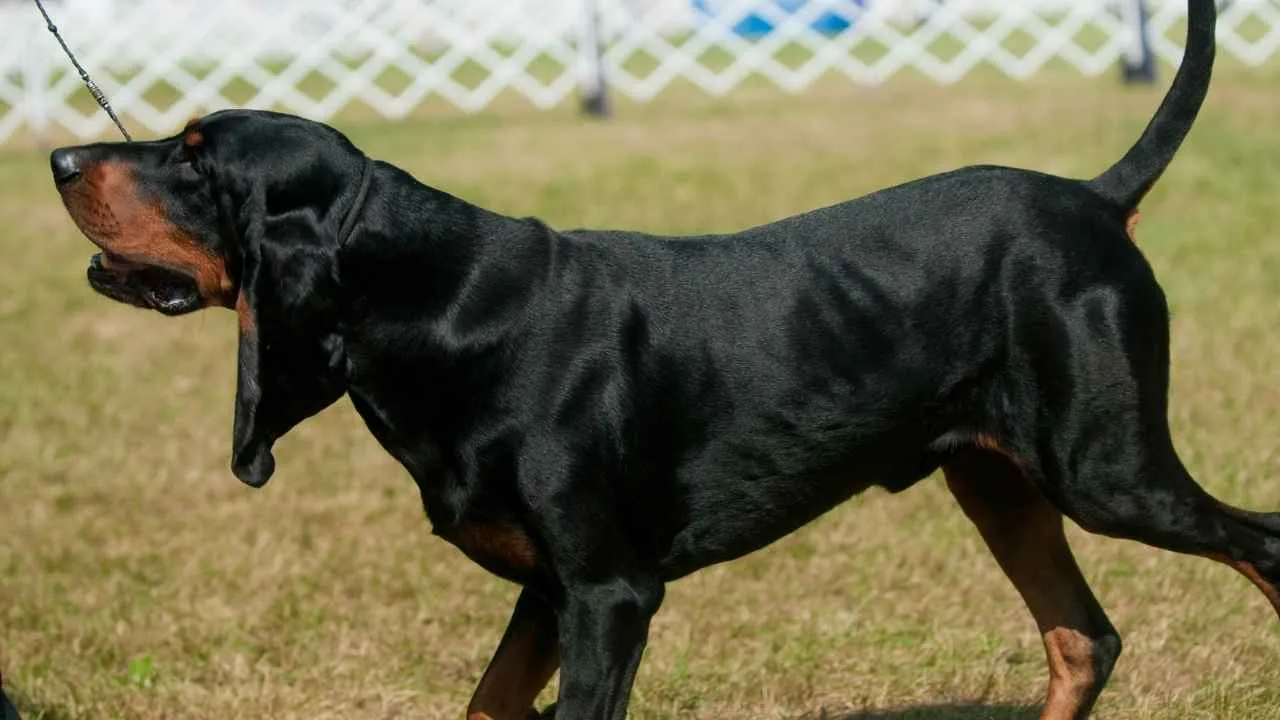
Often called the American Black and Tan Coonhound, this scenthound is known for its long ears, bold coloring, and famously steady disposition. Bred from classic hound lines, it stands out for its even-tempered nature and a nose that can follow a trail long after other dogs have given up.
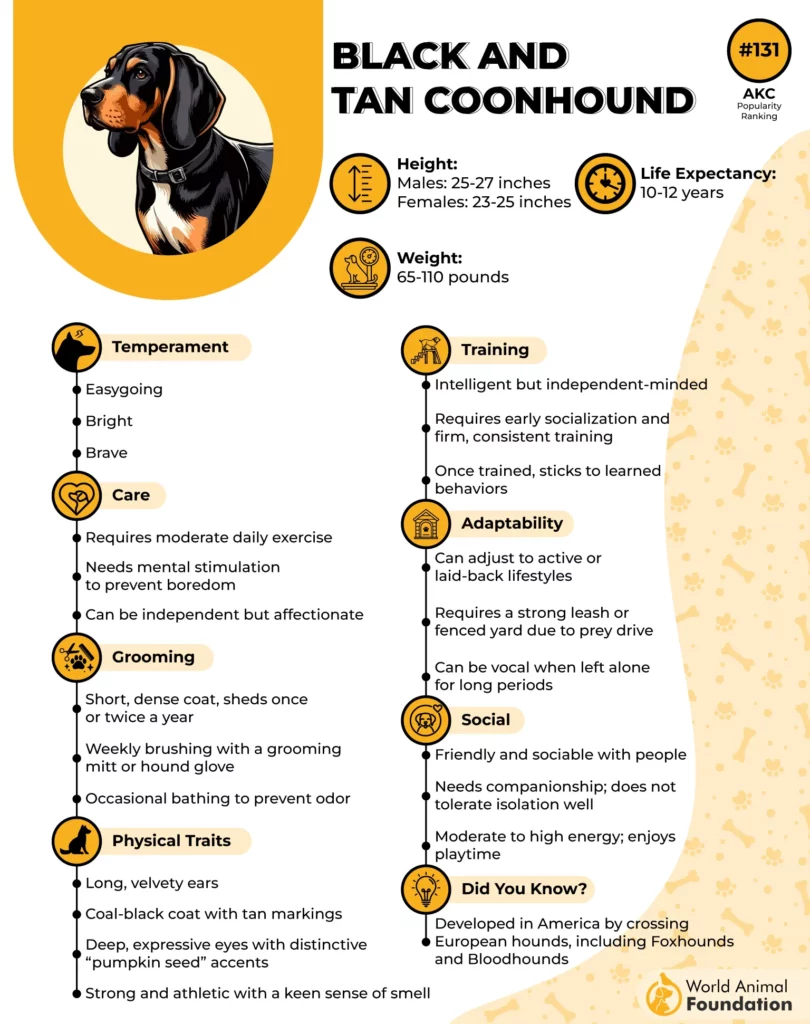
In small-game hunting, their cold-tracking ability makes them exceptional at locating raccoons and similar quarry across dense brush and uneven terrain. Their methodical pace keeps them focused on the scent rather than rushing the trail, which is invaluable when game doubles back or hides high in trees.
Hunting with a Black and Tan Coonhound often requires durable tracking gear—GPS collars, reflective harnesses, and rugged leads—to keep up with their long-range pursuits. Because these hounds work independently, handlers benefit from clear communication tools like tone or vibration-enabled training collars.
They also thrive with a comfortable crate and supportive boots for rocky areas, especially during long nights in the field. While they’re surprisingly relaxed at home, consistent daily activity keeps them sharp and ready for the next hunt.
Fun fact: The Black and Tan Coonhound is famed for its determination and stamina, bringing both skill and charm to every adventure.
7. Basset Hound

Often called the “Basset,” this low-slung scenthound is known for its velvety ears, droopy expression, and unmistakably long body. Originally bred in France—its name meaning “rather low”—the Basset Hound combines heavy bone and surprising strength in a compact frame built for steady work on the trail.
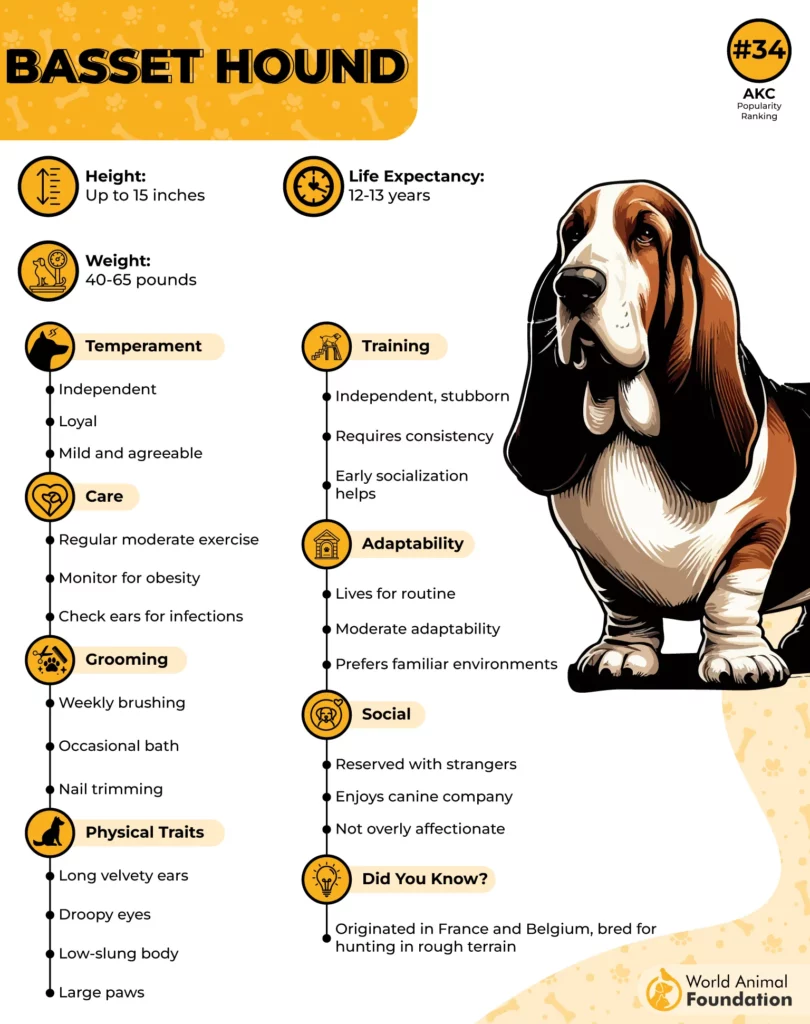
In small-game hunting, especially for rabbits, the Basset’s exceptional nose places it just behind the Bloodhound in scenting accuracy. Its deliberate pace and ground-hugging stature let it follow cold trails with precision, making it an excellent choice for hunters needing a persistent tracker.
To maintain peak field performance, Bassets benefit from consistent conditioning—daily long walks help preserve their stamina without stressing their backs. Their naturally calm temperament doesn’t diminish their drive; once they pick up a scent, they become determined, vocal workers on the trail.
Because the breed can easily gain weight, structured feeding routines and low-impact exercise are essential to support joint health and maintain working ability. Early, positive training keeps these intelligent yet stubborn hounds focused and responsive during hunts.
Fun fact: The Basset’s long ears help sweep scent toward its nose.
Conclusion
Small game hunting calls for dogs with sharp senses, stamina, and natural hunting instincts—qualities found across many talented bird dogs and small hunting dog breeds.
Whether you admire pointing breeds like the German Shorthaired Pointer or rely on energetic dogs that can retrieve upland birds across rough terrain, every hunting dog breed brings something unique to the field.
Medium-sized dogs such as the Golden Retriever or Labrador Retriever excel when asked to retrieve birds, flush game, or adapt to different hunting environments.
Even though they’re not the same breed, many of these friendly dogs share the eager-to-please attitude that makes them reliable partners during upland bird hunting or duck hunting.
For hunters who also value good house dogs and dependable family dogs, other breeds known for hunting rabbits or upland game offer a balance of work ethic and companionship.
The American Kennel Club highlights a wide range of dogs that can handle just about any job during hunting season. As you explore additional options beyond those listed here, remember that the best match depends on terrain, game, and the type of hunting birds you pursue.


